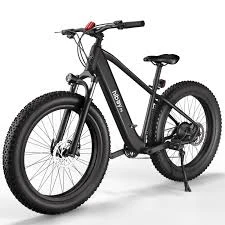
- Afrikaans
- Albanian
- Amharic
- Arabic
- Armenian
- Azerbaijani
- Basque
- Belarusian
- Bengali
- Bosnian
- Bulgarian
- Catalan
- Cebuano
- Corsican
- Croatian
- Czech
- Danish
- Dutch
- English
- Esperanto
- Estonian
- Finnish
- French
- Frisian
- Galician
- Georgian
- German
- Greek
- Gujarati
- Haitian Creole
- hausa
- hawaiian
- Hebrew
- Hindi
- Miao
- Hungarian
- Icelandic
- igbo
- Indonesian
- irish
- Italian
- Japanese
- Javanese
- Kannada
- kazakh
- Khmer
- Rwandese
- Korean
- Kurdish
- Kyrgyz
- Lao
- Latin
- Latvian
- Lithuanian
- Luxembourgish
- Macedonian
- Malgashi
- Malay
- Malayalam
- Maltese
- Maori
- Marathi
- Mongolian
- Myanmar
- Nepali
- Norwegian
- Norwegian
- Occitan
- Pashto
- Persian
- Polish
- Portuguese
- Punjabi
- Romanian
- Russian
- Samoan
- Scottish Gaelic
- Serbian
- Sesotho
- Shona
- Sindhi
- Sinhala
- Slovak
- Slovenian
- Somali
- Spanish
- Sundanese
- Swahili
- Swedish
- Tagalog
- Tajik
- Tamil
- Tatar
- Telugu
- Thai
- Turkish
- Turkmen
- Ukrainian
- Urdu
- Uighur
- Uzbek
- Vietnamese
- Welsh
- Bantu
- Yiddish
- Yoruba
- Zulu
Dec . 17, 2024 06:48 Back to list
how to tune a derailleur on a mountain bike
How to Tune a Derailleur on a Mountain Bike
Tuning a derailleur on a mountain bike is an essential skill for any serious rider. Properly adjusting the derailleur not only enhances your bike's performance but also contributes to a smoother, more enjoyable ride. Whether you’re facing shifting issues or just looking to improve your bike's overall functionality, tuning your derailleur can make a significant difference. Here’s a step-by-step guide to help you achieve the perfect adjustment.
Tools You Will Need
Before you start, gather the necessary tools - A 5mm Allen wrench (or the appropriate size for your derailleur) - A screwdriver (Philips or flat-head depending on your bike) - Bike lubricant - A clean rag
Step 1 Inspect Your Derailleur
Begin by examining your derailleur closely. Look for any visible damage or wear on the components. Check the cables for fraying and ensure that the derailleur hangs straight. If it's bent or misaligned, it may require realignment or replacement.
Step 2 Clean the Derailleur
Using a clean rag, wipe down the derailleur to remove any dirt and grime. Pay special attention to the pivot points and the jockey wheels. A clean derailleur functions better, as dirt can cause sluggish shifting.
Step 3 Adjust the Limit Screws
The limit screws are crucial for setting the boundaries of your derailleur
. There are usually two limit screws one for the high gear (smallest chainring) and one for the low gear (largest chainring).1. High Gear Limit To adjust the high gear limit screw, shift your bike into the smallest chainring at the front and the smallest sprocket at the back. The derailleur should be aligned just inside the sprocket. If the derailleur moves outside the sprocket, turn the high limit screw clockwise to restrict its movement. 2. Low Gear Limit Next, shift into the largest chainring and the largest sprocket. The derailleur should not touch the spokes or fall off the chain. If it does, turn the low limit screw clockwise until the derailleur is properly positioned.
how to tune a derailleur on a mountain bike

Step 4 Tension the Cable
With the limits set, it’s time to adjust the cable tension. Ensure your bike is in the smallest chainring and the smallest sprocket before checking the tension. Pull the cable tight and lock it in place with the Allen screw. If shifting is sluggish, you may need to tighten the cable further by using the barrel adjuster located near the rear derailleur or shifter.
Step 5 Adjust the B-Tension Screw
The B-tension screw affects how close the derailleur is to the cassette. Shift into the largest sprocket and check if the derailleur is too close, causing poor shifting. If so, adjust the B-tension screw until there is about 6-8 mm clearance between the top jockey wheel and the largest sprocket.
Step 6 Test the Shifting
Now it’s time to take your bike for a test ride. Shift through all the gears to check for smooth transitions. Pay attention to any skipping, hesitations, or unnecessary noise. If shifting is still not optimal, fine-tune cable tension with the barrel adjuster until you find the sweet spot.
Step 7 Lubricate
Finally, apply a small amount of bike lubricant to the pivot points of the derailleur and the chain. Regular lubrication helps keep the components moving freely and prolongs their lifespan.
Conclusion
Regularly tuning your derailleur is an integral part of mountain bike maintenance. With a few simple adjustments, you can ensure optimal performance, making your rides more enjoyable and efficient. Remember that practice makes perfect, and soon you’ll be an expert at tuning your derailleur. Happy riding!
-
The Ultimate Kids' Four-Wheeler Experience
NewsJul.09,2025
-
The Ultimate Guide to Mountain Bikes: Gear Up for Your Ride
NewsJul.09,2025
-
The New Age of Cycling: Electric Bikes for Every Rider
NewsJul.09,2025
-
The Best Kids Bicycles: Ride in Style and Safety
NewsJul.09,2025
-
The Best 3-Wheel Scooters for Kids: Fun, Safety, and Adventure
NewsJul.09,2025
-
Revolutionize Your Ride: Affordable Electric Bikes
NewsJul.09,2025
-
Finding the Perfect Mountain Bike for Every Rider
NewsJul.09,2025



